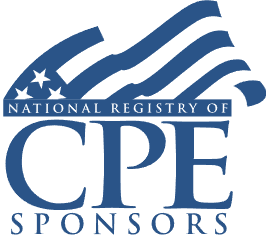GRAT Strategies to Minimize Transfer Tax After Tax Reform and Impact of 2026 Sunset Provisions

Course Details
- smart_display Format
On-Demand
- signal_cellular_alt Difficulty Level
Intermediate
- work Practice Area
Tax Preparer
- event Date
Tuesday, June 18, 2019
- schedule Time
1:00 PM E.T.
- timer Program Length
110 minutes
-
BARBRI is a NASBA CPE sponsor and this 110-minute webinar is accredited for 2.0 CPE credits.
-
BARBRI is an IRS-approved continuing education provider offering certified courses for Enrolled Agents (EA) and Tax Return Preparers (RTRP).
-
Live Online
On Demand
This course will explain creative grantor retained annuity trust (GRAT) strategies to maximize the amount passing to beneficiaries without paying transfer tax. The panel will discuss determining if a GRAT would benefit you or your client, specific strategies to optimize the GRAT(s) and under what circumstances to implement each approach.
Description
A GRAT allows a grantor to contribute assets to a trust but still receive annuity payments over a specified number of years. In a zeroed-out GRAT, the present value of the annuity payments, calculated using the Section 7520 rate, would equal the value of the assets contributed so that no taxable gift is made. However, many factors influence this simple example. Although a grantor escapes gift and estate tax, he continues to pay income tax on the trust's assets, and GST is still a consideration.
To be effective, the grantor must outlive the term of the annuity and, even better, the investments should out-perform the Section 7520 rate. Aside from these somewhat non-controllable aspects, advisers can take concrete steps to increase the value of the residual passing to beneficiaries.
The federal exemption that is now $11.4 million is scheduled to sunset in 2026 if Congress does not act in the meantime. Tax advisers must be aware of the impact of the sunset on transfer strategies to minimize transfer tax.
Listen as our panel helps discern when a GRAT is an effective estate planning tool and provides examples of ways to increase its value, including substituting investments, graduating annuity payouts, rolling short-term GRATs, 2026 GRATs and more.
Outline
- Benefits of a GRAT strategy
- Risks of a GRAT strategy
- Specific GRAT strategies
- Impact of tax reform on GRATs
Benefits
The panel will explain these and other concepts:
- Zeroed out GRATs
- Rolling short-term GRATs
- Graduated annuity pay-outs
- Asset substitution
- 2026's impact on GRATs and GRAT terms
NASBA Details
Learning Objectives
After completing this course, you will be able to:
- Discern when a GRAT may be an appropriate estate planning tool
- Identify several GRAT planning methods
- Determine the impact of 2026 sunset on GRAT strategies
- Recognize the appropriate GRAT technique under particular circumstances
- Field of Study: Taxes
- Level of Knowledge: Intermediate
- Advance Preparation: None
- Teaching Method: Seminar/Lecture
- Delivery Method: Group-Internet (via computer)
- Attendance Monitoring Method: Attendance is monitored electronically via a participant's PIN and through a series of attendance verification prompts displayed throughout the program
- Prerequisite: Three years+ business or public firm experience preparing complex tax forms and schedules, supervising other preparers or accountants. Specific knowledge and understanding of pass-through taxation, including taxation of partnerships, S corporations and sole proprietorships, qualified business income, net operating losses and loss limitations; familiarity with net operating loss carry-backs, carry-forwards and carried interests.

Strafford Publications, Inc. is registered with the National Association of State Boards of Accountancy (NASBA) as a sponsor of continuing professional education on the National Registry of CPE Sponsors. State boards of Accountancy have final authority on the acceptance of individual courses for CPE Credits. Complaints regarding registered sponsons may be submitted to NASBA through its website: www.nasbaregistry.org.

Strafford is an IRS-approved continuing education provider offering certified courses for Enrolled Agents (EA) and Tax Return Preparers (RTRP).
Unlimited access to premium CLE courses:
- Annual access
- Available live and on-demand
- Best for attorneys and legal professionals
Unlimited access to premium CPE courses.:
- Annual access
- Available live and on-demand
- Best for CPAs and tax professionals
Unlimited access to premium CLE, CPE, Professional Skills and Practice-Ready courses.:
- Annual access
- Available live and on-demand
- Best for legal, accounting, and tax professionals
Unlimited access to Professional Skills and Practice-Ready courses:
- Annual access
- Available on-demand
- Best for new attorneys
Related Courses
Recommended Resources
How CPE Can Bridge the Gap Between What You Know and What You Need to Know
- Career Advancement
